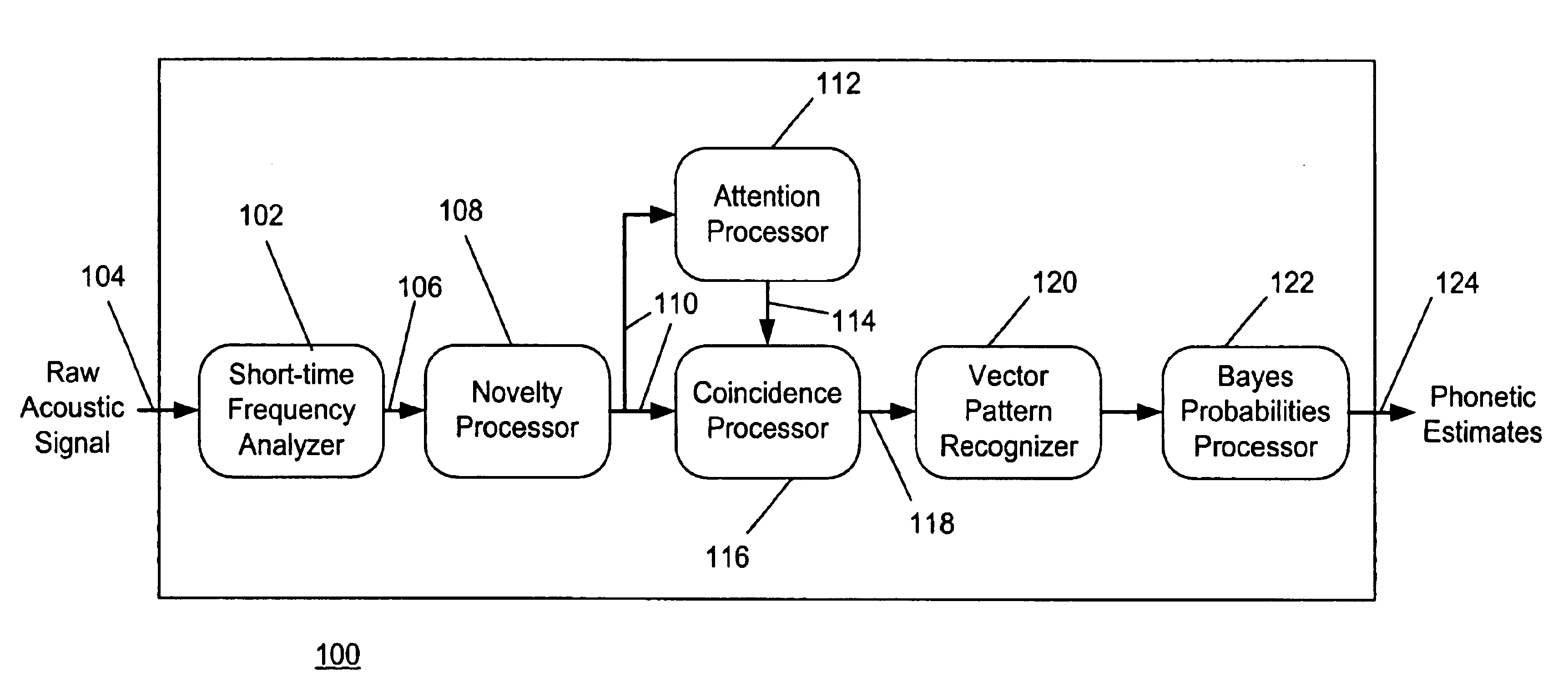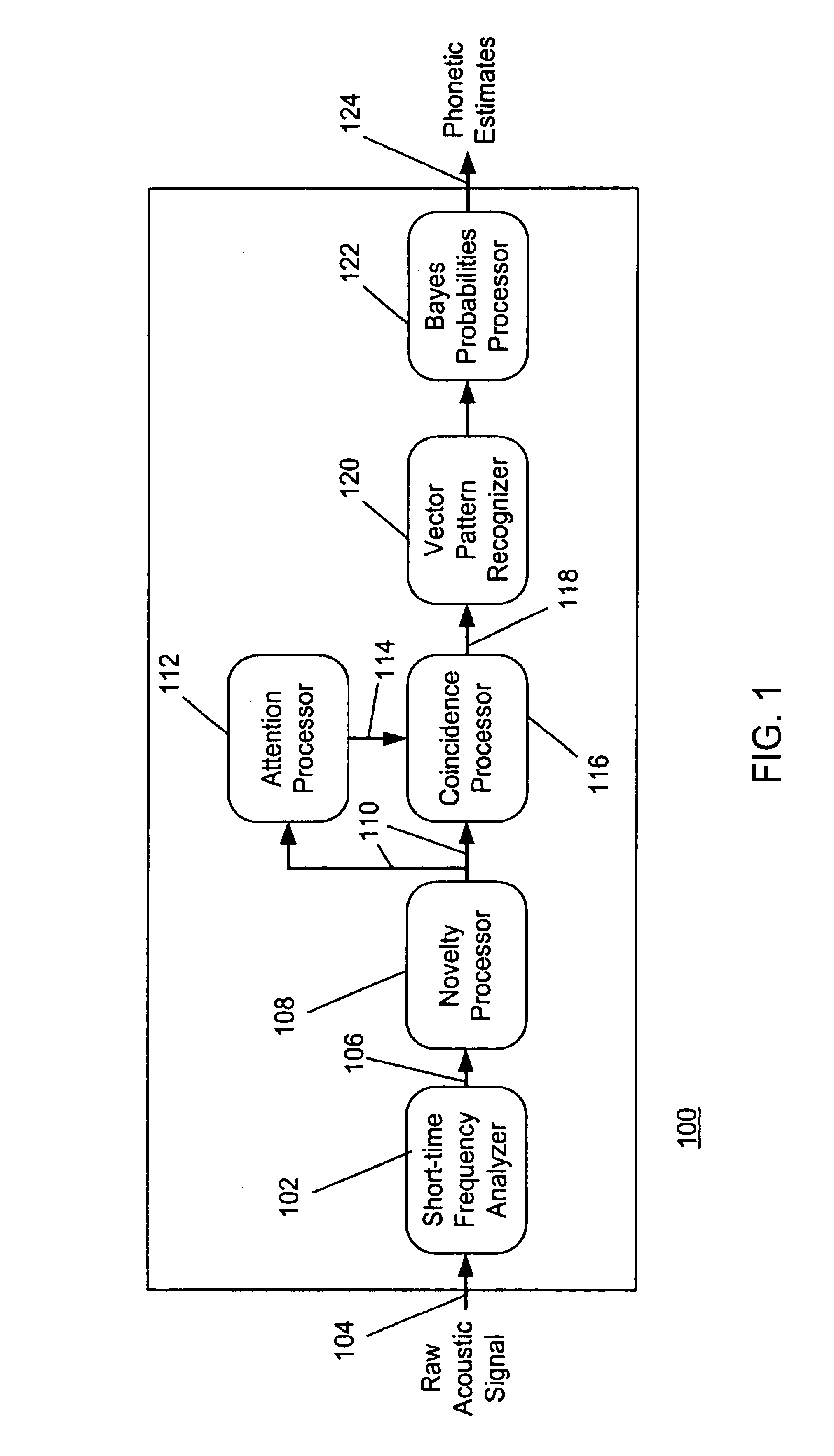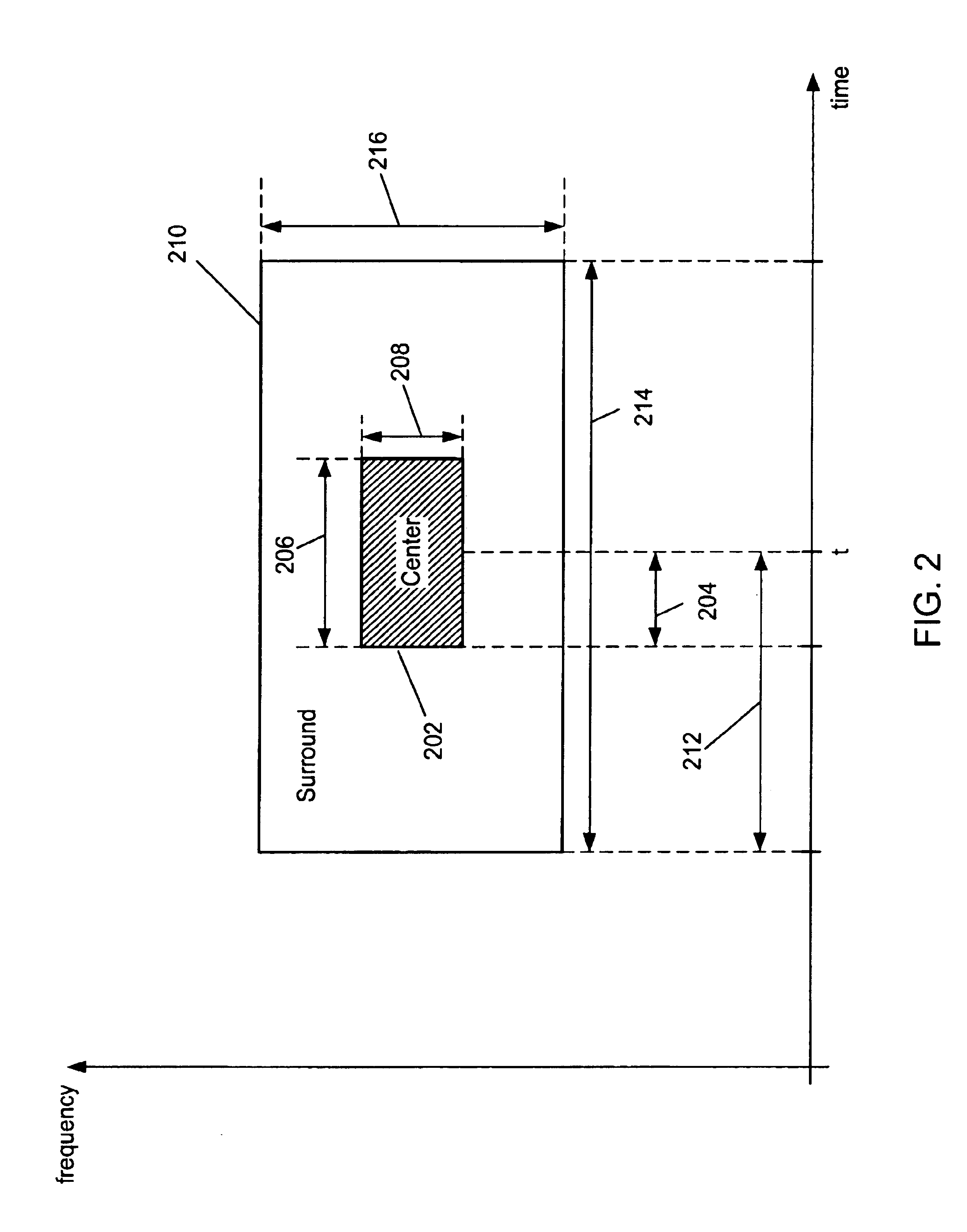Speech recognition system and method for generating phonotic estimates
a speech recognition and phonotic estimation technology, applied in the field of speech recognition, can solve the problems of increasing the noise and the effect of room acoustics on the signal, the sensitivity of the asr system to real-world levels of acoustic interference, and the worsening of the adverse effects of the acoustic signal to be recognized, etc., to achieve the effect of simplifying the follow-on processing steps
- Summary
- Abstract
- Description
- Claims
- Application Information
AI Technical Summary
Benefits of technology
Problems solved by technology
Method used
Image
Examples
Embodiment Construction
FIG. 1 provides an overview, in block diagram form, of the complete phonetic recognition system 100 according to the present invention. In the system 100, a short-time frequency analyzer 102 receives a raw acoustic signal 104 and produces a short-time representation 106 of the acoustic signal. A novelty processor 108 receives the short-time representation 106 of the acoustic signal and produces a novelty output 110. An attention processor 112 receives the novelty output 110 and produces an attention gate 114. A coincidence processor 116 receives the novelty output 110 and the attention gate 114 and produces a gated coincidence output 118. A vector pattern recognizer 120 and a Bayes probabilities processor 122 further process the gated coincidence output 118, so as to produce stream of phonetic estimates 124 corresponding to the acoustic signal 104.
The Short-time Frequency Analyzer 102, the Vector Pattern Recognizer 120 and the Bayes Probabilities processor 122 are described in detai...
PUM
 Login to View More
Login to View More Abstract
Description
Claims
Application Information
 Login to View More
Login to View More - R&D
- Intellectual Property
- Life Sciences
- Materials
- Tech Scout
- Unparalleled Data Quality
- Higher Quality Content
- 60% Fewer Hallucinations
Browse by: Latest US Patents, China's latest patents, Technical Efficacy Thesaurus, Application Domain, Technology Topic, Popular Technical Reports.
© 2025 PatSnap. All rights reserved.Legal|Privacy policy|Modern Slavery Act Transparency Statement|Sitemap|About US| Contact US: help@patsnap.com



